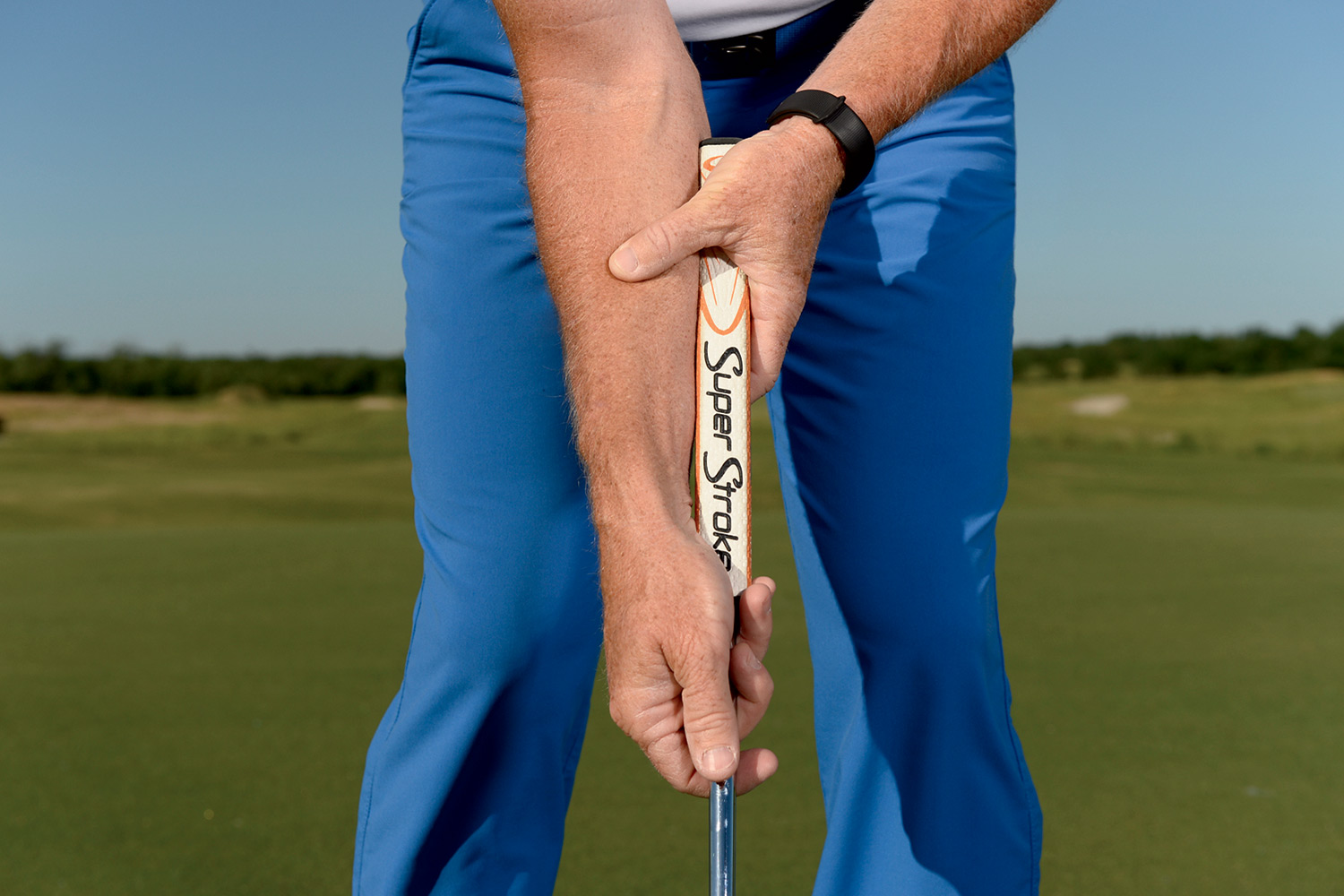Have your recent performances been less than satisfying?
I know it’s not enough to hear it happens to everyone from time to time. You want to shake off a period of stubs, lip-outs and three-jacks before they take hold for good and you’re racking up missed putts again like a kid catching Pokémon. Well, if you really want to fix this flatstick fiasco, you’re going to need a bit more than a 30-minute session rolling balls into those tiny golf cups. I recommend a full reboot. Here I’m going to give you four ways to pull yourself out of that putting rut. Sometimes only one of these will do the trick, but be prepared for the reality that you might need all four. Best get started. – with Ron Kaspriske
1. Bench Your Putter
If you’re the kind of golfer who talks to a putter, gives it a good spanking when it isn’t performing, and even threatens to back the truck over it in the car park, it’s time for the “we need to take a break from each other” conversation. Bench your putter for something different. Use a blade? Switch to a mallet. Always preferred heel-shafted putters? Try a centreshaft.
Everything from club length to grip circumference is up for consideration. Go get fitted. The big switch works for two reasons. First, there are no bad memories with a new putter. It’s a new day. Second, assuming the old one isn’t now residing in a scrap-metal yard, you’ll make it just jealous enough that it will perform its best when you rekindle your relationship.

2. Really Bench Your Putter
“It’s not you, it’s me” won’t fly as a break-up excuse after the second Tinder date, but it’s probably true of your relationship with the putter. It showed up ready to bury every five-footer – but sometimes you didn’t. You need a refresher on mechanics. So I suggest you practise putting with your sand wedge. It’s not as crazy as it sounds. A good stroke is propelled by the shoulders and requires minimal hand or wrist action. To get the ball rolling with a wedge, you have to make that kind of stroke hitting the ball at its equator with the leading edge [below]. This type of practice elicits precision and is good for the ol’ ego. You’re more apt to forgive yourself for a miss, which helps reduce those anxious feelings that turn you into a puddle of goo when the putts actually count.

3. Grab And Go
You’ve held your putter the same way for so long the grip is starting to look like one of those training clubs that has grooved channels for your fingers. It’s time to switch it up, because what you’re doing, as they say in Texas, is as pitiful as a three-legged dog. The easiest switch would be to flip hand positions so the higher one is lower. But I think you should take it a step further. Get crazy with it. Try the saw, the claw, the paintbrush, the non-anchored belly grip. Sometimes all you need is a dramatically different way of holding the club to reset your brain and start rolling the ball the way you used to.

4. Hit Some Bombs
 On the putting green you need to be more Picasso than Pythagoras. In other words, knowing the maths behind a putt is important (speed, slope, etc.) but don’t let it squelch your right-brain artistry. You probably aren’t crunching numbers when you ball up a piece of paper and try tossing it into the garbage. You just use your feel. My suggestion? Go deep. Find the longest, craziest putts on a green and try to make them. Even putting from well off the green will help you get your feel back. You know you have to hit the ball hard, and you know it’s going to break, but when you try these long-distance putts, you become less concerned with the mechanics and tap back into the hand-eye co-ordination you thought you lost. Another benefit? It will free up your stroke. No more trying to steer them in. You’ll putt without fear of missing. Reboot complete.
On the putting green you need to be more Picasso than Pythagoras. In other words, knowing the maths behind a putt is important (speed, slope, etc.) but don’t let it squelch your right-brain artistry. You probably aren’t crunching numbers when you ball up a piece of paper and try tossing it into the garbage. You just use your feel. My suggestion? Go deep. Find the longest, craziest putts on a green and try to make them. Even putting from well off the green will help you get your feel back. You know you have to hit the ball hard, and you know it’s going to break, but when you try these long-distance putts, you become less concerned with the mechanics and tap back into the hand-eye co-ordination you thought you lost. Another benefit? It will free up your stroke. No more trying to steer them in. You’ll putt without fear of missing. Reboot complete.
– Cameron McCormick is Jordan Spieth’s instructor and teaches at Trinity Forest Golf Club in Dallas.




